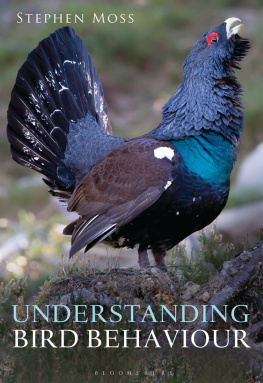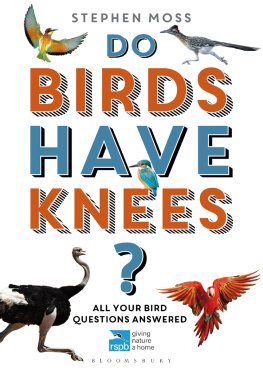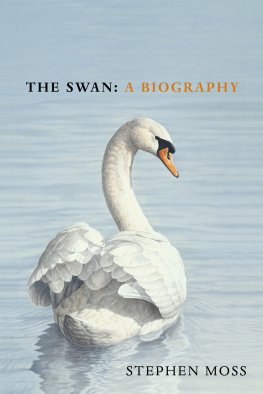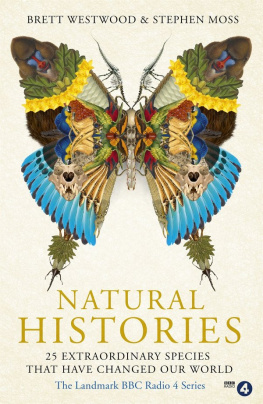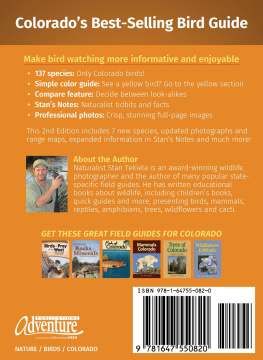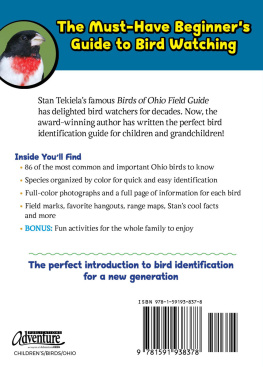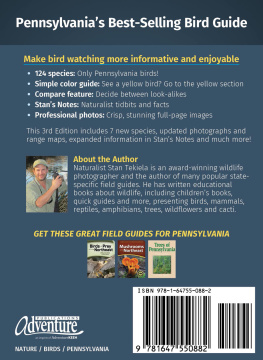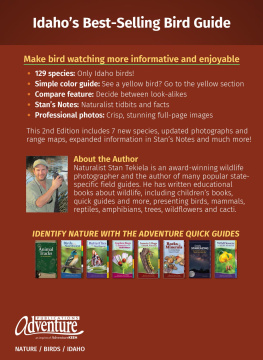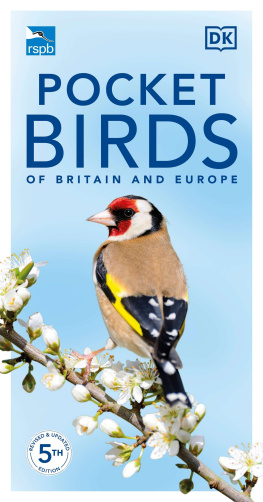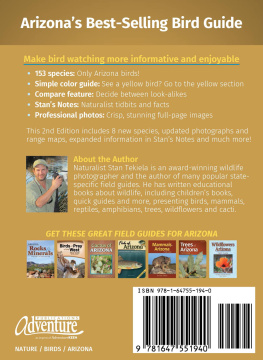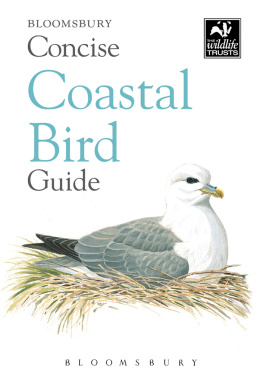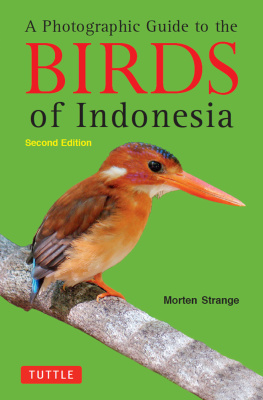

To Suzanne, who opened my eyes to the wonders of bird behaviour
This electronic edition published in 2015 by Bloomsbury Publishing Plc
Bloomsbury Natural History
An imprint of Bloomsbury Publishing Plc
| 50 Bedford Square | 1385 Broadway |
| London | New York |
| WC1B 3DP | NY 10018 |
| UK | USA |
www.bloomsbury.com
BLOOMSBURY and the Diana logo are trademarks of Bloomsbury Publishing Plc
First published 2015
text, Stephen Moss, 2015
photographs, David Tipling
Except 23, 31, 39 (bottom), 40, 71, 74, 76, 77, 78, 79, 94, 101 (right), 155 (top) Getty Images
Stephen Moss has asserted his right under the Copyright, Designs and Patents Act, 1988, to be identified as Author of this work.
All rights reserved
You may not copy, distribute, transmit, reproduce or otherwise make available this publication (or any part of it) in any form, or by any means (including without limitation electronic, digital, optical, mechanical, photocopying, printing, recording or otherwise), without the prior written permission of the publisher. Any person who does any unauthorised act in relation to this publication may be liable to criminal prosecution and civil claims for damages.
No responsibility for loss caused to any individual or organisation acting on or refraining from action as a result of the material in this publication can be accepted by Bloomsbury or the author.
British Library Cataloguing-in-Publication Data
A catalogue record for this book is available from the British Library.
Library of Congress Cataloguing-in-Publication data has been applied for.
ISBN: PB: 978-1-4729-1206-0
ePDF: 978-1-4729-2585-5
ePub: 978-1-4729-2586-2
Designed and typeset in UK by Susan McIntyre
To find out more about our authors and books visit www.bloomsbury.com. Here you will find extracts, author interviews, details of forthcoming events and the option to sign up for our newsletters.
The Wildlife Trusts
The Wildlife Trusts are the UKs largest people-powered organisation caring for all nature rivers, bogs, meadows, forests, seas and much more. We are 47 Wildlife Trusts covering the whole of the UK with a shared mission to restore nature everywhere we can and to inspire people to value and take action for nature for future generations.
Together we care for thousands of wild places that are great for both people and wildlife. These include more than 760 woodlands, 500 grasslands and even 11 gardens. Youre away from your nearest Wildlife Trust nature reserve and most people have one within a few miles of their home.
Our goal is natures recovery on land and at sea. To achieve this we rely on the vital support of our 800,000 members, 40,000 volunteers, donors, corporate supporters and funders. To find the Wildlife Trust that means most to you and lend your support, visit wildlifetrusts.org/your-local-trust
Importantly, we encourage people to experience wildlife for themselves. We believe that a deeper appreciation for nature conservation can start with a book such as this one by Stephen Moss. We need more people to understand and value the birds and other wildlife that are to be found in our countryside.
Understanding Bird Behaviour introduces the reader to the habitats and characteristics of birds in life how and why birds feed, preen, and react with others of their kind. The author compares such behaviour as courtship, fledging, flight and migration among many different species, and investigates the instincts and circumstances that trigger these behaviours.
Few realise just how endangered much of our British wildlife is. In recent years, once-common bird species such as the sparrow and Starling have declined, mainly due to the demands of that modern human living has placed on habitats.
The Wildlife Trusts believe, however, that it is not too late. Much can still be done to reverse the losses of the past, and we all have a part to play in making this happen. One way is to contact your local Wildlife Trust for information on wildlife activities and volunteering opportunities, and on local wild places. Help us to protect wildlife for the future and become a member today! Visit www.wildlifetrusts.org for further information. The Wildlife Trusts is a registered charity (number 207238).
We hope that, with the help of this book, you have fun learning more about birds and their behaviour!

CONTENTS
Introduction

Snow Buntings often spend the winter on shingle beaches
Studying bird behaviour is one of the most fascinating and potentially rewarding aspects of watching birds. But where do you start? At first, understanding what birds are doing, and more importantly why, can be confusing especially if you are a newcomer to birding. Is the aspect of behaviour you are witnessing a normal part of daily life, or something unusual? Will your presence disturb the bird and force it to behave out of character? And how do you interpret some new or different aspect of behaviour you have not witnessed before?
Hopefully, this book will provide some of the answers to these and many other questions. Its purpose is threefold:
i) To provide an introduction to the various different forms and aspects of bird behaviour, categorised by subject
ii) To indicate specific types of behaviour characteristic of certain species or family groups
iii) To be a work of reference use the index to look up either a particular species, or a specific aspect of bird behaviour
The book is divided into two parts, each of which can be read independently, or you can cross-refer between them.
Part 1 covers the various types of bird behaviour, such as flight, courtship, predation and migration, loosely grouped under the chapter headings of Movement, Feeding, Breeding, Migration and Navigation, Distribution and Range, and Life and Death. This provides a quick and easy reference to specific behaviours.
Part 2 is arranged by families, or groups of similar birds, such as seabirds. This includes the 200 or so species that you are most likely to encounter in Britain, some common, others scarce, with details of behaviour common to a particular species or group. This enables you to look up particular species and get some insight into their behaviour, though for reasons of space this cannot possibly be comprehensive. If you are interested in following up the behaviour of a particular species or family, details of suitable works can be found in the Further Reading section at the back of the book.
For much of the second half of the 20th century, thanks to major advances in field guides and optics, birding focused mainly on two related aspects: identification and rarities. While these are both fascinating and important, for a long period they came to dominate birders minds at the expense of another vital aspect of understanding and enjoying birds, that of studying and interpreting their various behaviours.

